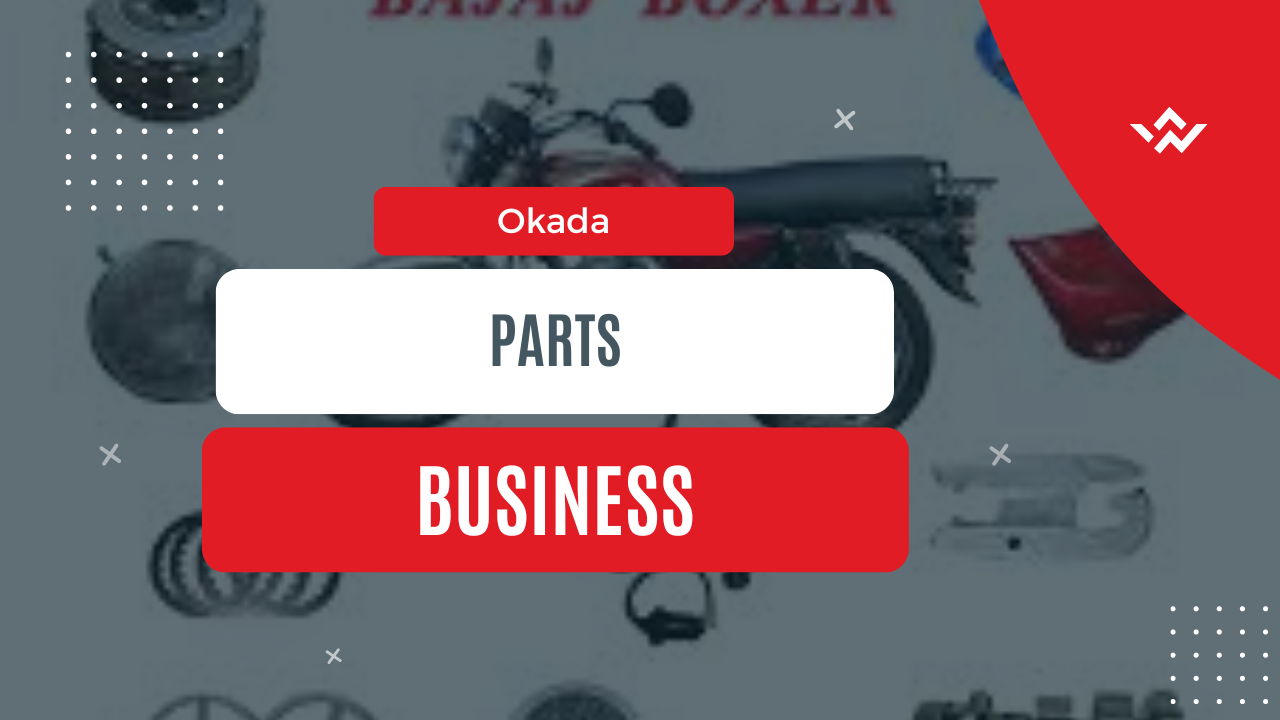
Tapping into Nigeria’s Thriving Motorcycle Market
The Okada parts business is a crucial segment of Nigeria’s bustling transportation sector, supporting the country’s vast fleet of commercial motorcycles. As Okadas continue to play a significant role in urban mobility, the demand for quality motorcycle parts remains high. This comprehensive guide explores the ins and outs of the Okada parts business, offering insights into market opportunities, challenges, and strategies for success.
Understanding the Okada Parts Market
The Okada parts market in Nigeria is driven by several factors:
1. Large Motorcycle Fleet: Nigeria has millions of motorcycles on its roads, creating a constant need for replacement parts.
2. Maintenance Culture: Regular maintenance is essential for keeping Okadas operational, fueling demand for parts.
3. Affordability: Many riders prefer affordable aftermarket parts over expensive original equipment manufacturer (OEM) components.
4. Diverse Brand Landscape: The market caters to various motorcycle brands popular in Nigeria, including Bajaj, TVS, and Honda.
Key Segments of the Okada Parts Business
1. Engine Parts: Pistons, cylinders, crankshafts, and valves
2. Electrical Components: Batteries, spark plugs, and lighting systems
3. Transmission Parts: Clutches, gears, and chains
4. Suspension and Steering: Shock absorbers, forks, and handlebars
5. Brakes: Brake pads, shoes, and cables
6. Tires and Wheels: Various sizes and types of tires and rims
7. Body Parts: Fenders, seats, and fairings
8. Accessories: Mirrors, horns, and cargo racks
Starting an Okada Parts Business
To launch a successful Okada parts business, consider these steps:
1. Market Research: Analyze local demand, competition, and popular motorcycle models in your area.
2. Business Planning: Develop a comprehensive business plan outlining your goals, target market, and financial projections.
3. Location Selection: Choose a strategic location, preferably near Okada parks or high-traffic areas.
4. Supplier Relationships: Establish connections with reliable parts manufacturers or wholesalers.
5. Inventory Management: Stock a diverse range of fast-moving parts while managing slow-moving inventory.
6. Pricing Strategy: Set competitive prices that balance profitability with market demand.
7. Customer Service: Train staff to provide knowledgeable and helpful service to build customer loyalty.
8. Marketing and Promotion: Utilize both traditional and digital marketing techniques to attract customers.
Challenges in the Okada Parts Business
While the Okada parts business offers significant opportunities, it also comes with challenges:
1. Counterfeit Parts: The market is flooded with low-quality counterfeit parts, posing a challenge for legitimate businesses.
2. Price Competition: Intense competition can lead to price wars, potentially affecting profit margins.
3. Inventory Management: Balancing stock levels to meet demand without tying up too much capital can be tricky.
4. Changing Regulations: Government policies regarding Okada operations can impact the parts market.
5. Technical Knowledge: Staying updated on various motorcycle models and their specific parts requirements is essential.
6. Currency Fluctuations: For imported parts, exchange rate volatility can affect pricing and profitability.
Strategies for Success in the Okada Parts Business
To thrive in this competitive market, consider implementing these strategies:
1. Focus on Quality: Build a reputation for selling reliable, high-quality parts to differentiate your business.
2. Offer Expertise: Provide valuable advice and technical knowledge to customers, becoming a trusted resource.
3. Diversify Product Range: Stock parts for various popular motorcycle brands to cater to a wider customer base.
4. Embrace Technology: Implement inventory management systems and consider e-commerce options to reach more customers.
5. Build Strong Supplier Relationships: Negotiate better prices and ensure a steady supply of in-demand parts.
6. Provide Value-Added Services: Offer installation services or partner with nearby mechanics to create additional revenue streams.
7. Stay Informed: Keep up with industry trends, new motorcycle models, and changing regulations.
8. Customer Loyalty Programs: Implement programs to encourage repeat business and word-of-mouth referrals.
The Role of E-commerce in the Okada Parts Business
As digital technology advances in Nigeria, e-commerce presents new opportunities:
1. Online Catalogs: Showcase your inventory online, making it easier for customers to find specific parts.
2. E-commerce Platforms: Sell parts through established online marketplaces or your own e-commerce website.
3. Social Media Marketing: Utilize platforms like Facebook and Instagram to reach potential customers and showcase products.
4. Digital Payments: Offer convenient payment options, including mobile money and bank transfers.
5. Delivery Services: Partner with local delivery services to offer home or shop delivery for online orders.
Sustainability and the Future of the Okada Parts Business
As environmental concerns grow, the Okada parts business may need to adapt:
1. Electric Motorcycles: The potential shift towards electric bikes may create demand for new types of parts and components.
2. Recycling Programs: Implementing parts recycling initiatives can appeal to environmentally conscious customers.
3. Energy-Efficient Parts: Stocking and promoting parts that improve fuel efficiency can attract cost-conscious riders.
4. Eco-Friendly Packaging: Using sustainable packaging materials can enhance your business’s environmental credentials.
What if you want to learn the Okada Business properly?
The Okada parts business in Nigeria offers substantial opportunities for entrepreneurs willing to navigate its challenges. By focusing on quality, customer service, and adapting to changing market dynamics, businesses can carve out a successful niche in this vital industry.
As urban transportation continues to evolve in Nigeria, the Okada parts business will likely remain an essential component of the mobility ecosystem. Whether you’re considering entering the market or looking to expand an existing operation, staying informed about industry trends, maintaining strong supplier relationships, and prioritizing customer needs will be key to long-term success. With the right approach, the Okada parts business can be a lucrative venture, contributing to both the local economy and the efficient operation of Nigeria’s vast motorcycle fleet. As the sector continues to grow and adapt, those who can innovate and provide reliable, quality products will be well-positioned to thrive in this dynamic market.

0 Comments